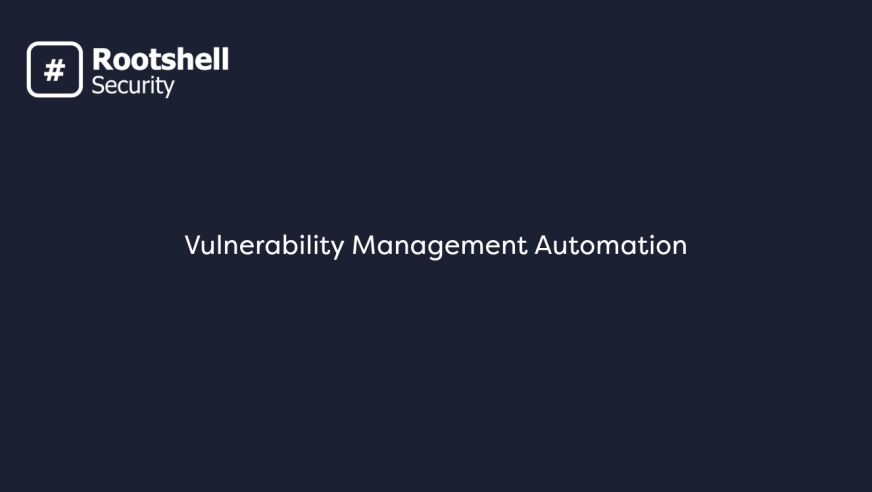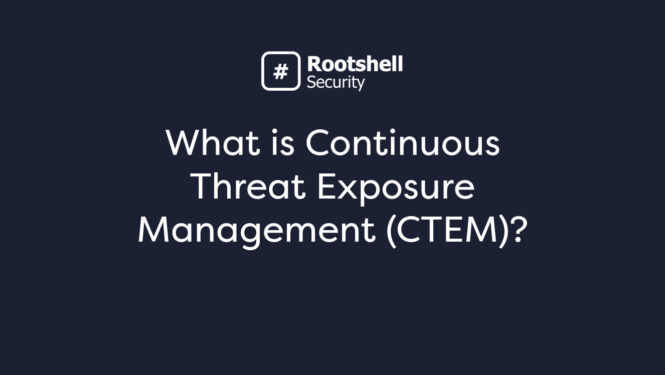Cyber criminals are constantly looking for ways to exploit any weaknesses in a business’ digital infrastructure, which is why it has become increasingly important to defend against cyber attacks.
However, instead of waiting for attacks to happen and trying to block them, it’s always advisable to preempt them.
Vulnerability management automation allows you to routinely find any points of weakness and security flaws, which you can then remediate or mitigate before they become a point of entry for cyber criminals.
Below, we discuss vulnerability management and how automation can be beneficial for your organization.
What Is Vulnerability Management?
A business’ network and systems are always under threat from threat actors. The issue is that even small and medium businesses are not safe. In fact, they might be targeted more since the assumption is that they won’t have a strict cybersecurity protocol in place.
When hackers attack a business, they look for exploitable weaknesses in the infrastructure, cloud environments, websites and apps, mobile devices, or Internet of Things (IoT) devices. Vulnerability management is the process of identifying security weaknesses in each one so you can reduce the attack surface. Once the vulnerabilities have been identified, steps can be taken to fortify them.
Managing vulnerabilities is more than just the process of finding weaknesses. It is the end-to-end process of identifying, evaluating, prioritizing, and dealing with the flaws in the system.
Cybersecurity Vulnerabilities
Cybersecurity vulnerabilities can be due to improper setup of software or hardware. They can also be created when a new feature is introduced or when you update an old piece of code.
However, any exploitable attribute in your system can be considered a vulnerability.
Some common vulnerabilities are:
- Outdated software that has not been patched
- Zero-day vulnerabilities
- Misconfigurations in security
- Unsecured APIs
- Broken authentication
- SQL injection
- Weak user credentials

Risk-Based Vulnerability Management
One way of managing vulnerabilities is to remediate and mitigate any that are found as soon as possible. However, this is not the most efficient method, as not all vulnerabilities are equally critical. Some might seem dangerous but affect non-essential aspects of the business. On the other hand, security flaws that look inconsequential might lead to cybertheft of valuable assets and resources.
Risk-based vulnerability management, on the other hand, manages vulnerabilities more strategically.
In this system, each vulnerability is assessed by how much of a risk it poses. Then, based on that information, it is assigned a priority value. That value is taken into account when determining which security flaw to work on first.
As a result, your plan of action becomes much more focused. Your team no longer wastes time fixing non-critical issues and has more time to devote to vulnerabilities that may affect your business.
As a result, your plan of action becomes much more focused. Your team no longer wastes time fixing non-critical issues and has more time to devote to vulnerabilities that may affect your business.
Vulnerability Management Process
Managing vulnerabilities in your systems, as we discussed earlier, is more than just finding weaknesses. Here is how the vulnerability management process works:
Identification
The first step in the process is identifying the vulnerabilities that are present in your system. With an automated vulnerability management system, you have a scanner that goes through endpoints, networks, assets, and systems to find weaknesses that could be exploited.
Otherwise, the process is conducted manually, starting with checking with your employees to see if they’ve discovered any problems. Then, any systems or programs that have network access are scanned, and any services that run on the network are tracked.
Analysis
Once weaknesses are identified, they are assessed to find out how much time, money, and resources you’d need to spend to fix them. During this process, each vulnerability is assigned a Vulnerability Priority Rating (VPR) or a Common Vulnerability Scoring System (CVSS), which is a rank based on:
- How easy it is for a hacker to exploit this weakness
- How much of a threat it poses to the network and business assets
- How long it will take to fix the weakness
This ranking enables you to prioritize the found vulnerabilities, so you can allocate resources efficiently and get the best results.
Treatment
Depending on the previous step, you can strategize your plan of action to deal with the identified vulnerabilities. Security weaknesses with a higher VPR are addressed first and the idea is to remediate, mitigate, or accept the vulnerability.
Remediation: Resolve the vulnerability so it’s no longer a threat.
Mitigation: If the vulnerability cannot be resolved completely, steps should be taken to mitigate the impact it could have on the business.
Acceptance: If the vulnerability is low-risk and the cost of fixing it is higher than its potential risk, it is better to simply accept it whilst being aware of its existence.
Continued Reporting and Monitoring
Since threats are constantly evolving, your business also needs to reassess your systems and vulnerabilities periodically. That allows you to stay abreast of the latest threats and keep your business safe.
What Is Vulnerability Management Automation?

When you automate your vulnerability management, you use a scanner that does the work for you. It goes through your hardware, software, and network to discover vulnerabilities.
Once the scanner has compiled your list, it analyzes your vulnerabilities and assigns a priority value before generating a report.
Automating vulnerability management does not mean you no longer need to stop managing security flaws. Since it’s carried out by artificial intelligence (AI), you will get some false positives. That means a human will need to go through the report to determine which of the vulnerabilities identified are not really weaknesses.
In spite of this drawback, automated vulnerability management does offer a number of benefits.
Benefits of Automated Vulnerability Management
Makes Your Cybersecurity Proactive
When a business gets hacked and tries to mitigate the damage, it’s often too little, too late. On the other hand, by actively monitoring for security weaknesses, you can safeguard your data against security breaches.
Improves Your Average MTTD and MTTR
Mean Time to Detect (MTTD) and Mean Time to Respond (MTTR) are two very valuable KPIs in cybersecurity. The former shows how long it takes to detect a vulnerability once it appears. The latter shows the time taken to remediate or mitigate a vulnerability once it has been detected.
Automating vulnerability management allows your business to reduce the value of both these indicators. That’s because scans are actively looking for weaknesses instead of finding out about them after a cyber criminal has exploited them.
Automated vulnerability scans that run annually, quarterly, or monthly can help you find security flaws soon after they appear, if not immediately.
Helps Optimize Your Resources
When you automate a repetitive task like vulnerability scanning, it leaves your IT team free to work on other problems. Your business is still protected, but the tedious part of cybersecurity is undertaken by AI.
The experts can focus on fixing issues instead of finding out what they are.
Furthermore, when you do get a scan report, it assigns priority values to the detected vulnerabilities. Since all vulnerabilities are not equal, it does not make sense to prioritize them all equally.
The priority score allows you to remediate critical vulnerabilities that pose a greater risk to the security of your business, and work your way down the list. These reports also help you categorize risks into those that can be remediated or mitigated and those that can be allowed.
That is another way vulnerability automation enables you to strategize your resource allocation—by assigning priorities.
Reduces Human Error
Vulnerability management automation may list false positives that you then have to manually review. However, when traditional vulnerability management is done manually, it’s susceptible to human error.
The threat environment in the cyber world is constantly changing and evolving. Human analysts need to be aware of the latest risks. They then need to scan the systems, identify the risks, and report them.
Analysts are only human; things can slip through the cracks, be forgotten, or missed.
As we saw earlier, it’s sometimes necessary to accept that vulnerability can’t be fixed. However, that’s only acceptable when you are aware of the security flaw and know it does not pose a significant risk.
When you automate your vulnerability management, any weaknesses left on your systems are by design rather than human error.
Vulnerability Management Automation With The Rootshell Platform
The Rootshell Platform provides a vendor-agnostic vulnerability management solution that helps you consolidate all your vulnerability management efforts. All information is standardized in a single database, from where you receive insights and context of your issues.
With Rootshell, you can streamline, track, and automate your remediation efforts for improved efficiency. Finally, Rootshell offers a broad view of your threat landscape through our detailed reporting feature.
Do you want to fortify your business against potential cyber attacks? Request a demo and see how we can make vulnerability management easier for you.



